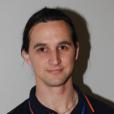
Showing 301 - 320 of 1321 results
Celebrating Vivid light and Synchrotron light
New research project to understand sediment in Dee Why lagoon
Synchrotron scientist in team that makes historic meteorite find
ANSTO’s own meteorite hunter, who is also a planetary scientist and instrument scientist Dr Helen Brand took part in an expedition led by Professor Andy Tomkins of Monash University that has found the largest meteorite strewn field in Australia since the famous Murchison meteorite event in 1969.
Leading review confirms Australia's world-class credentials in nuclear safety and security
ANSTO has just completed the largest coordinated safety and security review of the OPAL multi-purpose research reactor, as part of a new a world-leading approach to assessing performance

Diversity, Equity, Inclusion and Belonging
At ANSTO we understand that diverse teams produce better outcomes – and we value the merit that a diverse perspective can bring to the quality and outcomes of our work, and the way we get the job done.

Role at ANSTO

CORIS360® case studies

Mineralogy Facility
Our dedicated mineralogists provide specialised knowledge on the mineralogy of ores/concentrates and the wide variety of solids and residues typically generated in hydromet processes. We have well-equipped facilities that can handle a diverse range of samples, particularly those containing elevated concentrations of uranium and thorium.
Helping to support the environmental future of Antarctica
The start of ANSTO’s research to support the Securing Antarctica’s Environmental Future (SAEF) program commenced with the official launch of the program and the departure of two students from Queensland University of Technology (QUT), who are affiliated with ANSTO to Antarctica’s Macquarie Island for six months to collect environmental samples as part of the (SAEF) program.
ANSTO scientist awarded Nancy Millis Medal for Women in Science by the Australian Academy of Science
One of ANSTO’s most accomplished scientists and internationally recognised energy researchers, Prof Vanessa Peterson, has been awarded the Nancy Millis Medal for Woman in Science by the Australian Academy of Science this week.

Scientific Computing
The Scientific Computing team supports researchers by performing numerical simulations that complement experimental research. In particular, we use state-of-the-art software to perform computational quantum mechanical modelling, molecular dynamics simulations, lattice dynamics calculation, data analysis and visualisations.

ASP databases
Datasets from the Aerosol Sampling Program.
Australia is home to one of the world’s best nuclear reactors
Over the past 70 years ANSTO has been building Australia’s nuclear expertise and despite being small in scale, today we are complex and sophisticated nuclear nation.

Role at ANSTO
Top Coder winner announced
Padstow North and Caringbah North selected as winners of ANSTO's Top Coder competition.
New technique to improve global climate models
An investigation that set out to resolve some of the uncertainty in the sources and quantities of pollutants reaching Antarctica has produced a new experimental technique to identify and characterise recently terrestrially-influenced air reaching Antarctica.
Deciphering the complex molecular activity that leads to cell death
Research on the mechanism of cell death has insights to bring progress on neurodegenerative diseases and plant biosecurity.